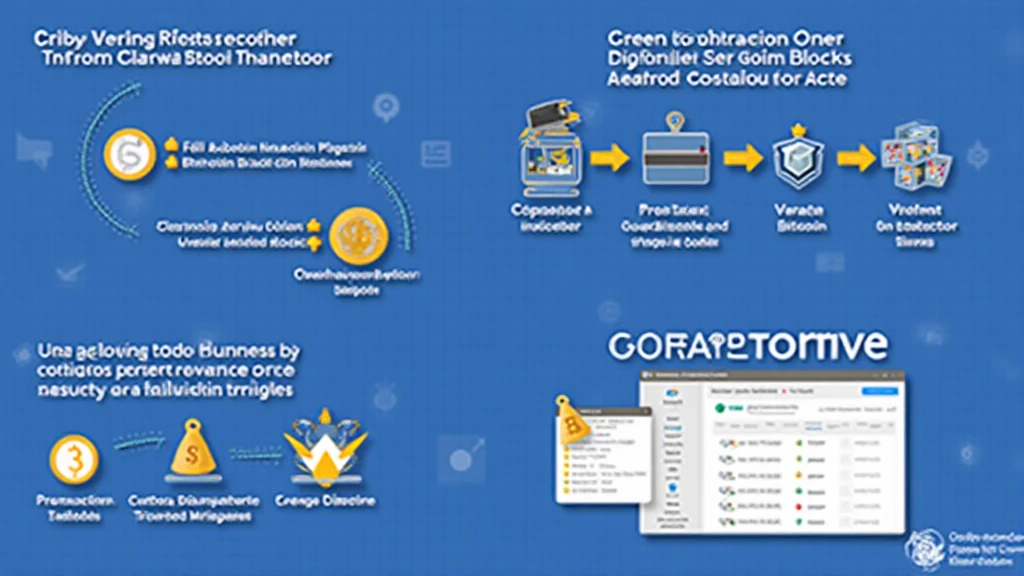How to Verify Bitcoin Transactions: A Comprehensive Guide
In 2023, the cryptocurrency landscape has been marked by incredible growth. With over $2 trillion in market capitalization, understanding how to verify Bitcoin transactions has never been more important. As security breaches rise, users must protect their digital assets diligently. In this article, we will explore the steps required for verifying Bitcoin transactions securely, all while addressing potential risks and techniques.
The Importance of Verifying Bitcoin Transactions
As the saying goes, “not your keys, not your coins.” This holds incredibly true in the world of digital currencies. In 2022 alone, nearly $4.1 billion was lost to DeFi hacks. For individuals and businesses engaging in cryptocurrency, understanding how to verify Bitcoin transactions ensures that one’s investments are protected.
- Security Measures: With rising cyber attacks, verifying transactions properly is crucial.
- Fraud Prevention: The chances of falling victim to scams can be significantly reduced by transaction verification.
- Peace of Mind: Knowing the legitimacy of your transactions builds trust in using cryptocurrencies.
Understanding Bitcoin Transactions
Verifying a Bitcoin transaction involves understanding how the underlying blockchain technology operates. Every transaction is recorded on the Bitcoin blockchain, which is essentially a decentralized ledger. This ledger is available for anyone to see, providing ultimate transparency. However, users need to know how to navigate this network effectively.

Key Components of a Bitcoin Transaction
- Inputs: This refers to the source of the bitcoins being spent.
- Outputs: This is the destination of the bitcoins being transferred.
- Transaction ID: A unique identifier for every transaction that facilitates tracking.
- Block Confirmation: Until a transaction is confirmed in a block, it is considered ‘unconfirmed’ and vulnerable.
Steps to Verify Your Bitcoin Transactions
Let’s break it down. Here are the steps to ensure your Bitcoin transactions are valid and secure:
1. Use a Block Explorer
Block explorers are tools that allow users to view all transactions on the blockchain. They display transaction details and let you search for specific transactions using the Transaction ID.
- Examples include BlockChain.com and Blockchair.
- Simply enter your Transaction ID, and you can see the transaction status and details.
2. Confirm with Your Wallet Service
Always cross-reference your transaction with your crypto wallet. Wallets are designed to provide accurate transaction histories.
- Ensure your wallet is from a reputable service guaranteeing transaction integrity.
3. Assess Block Confirmations
Each Bitcoin transaction requires confirmations from miners. For optimal security, ensure that your transaction has at least six confirmations.
- More confirmations mean the transaction is more secure and irreversible.
Common Issues in Bitcoin Transaction Verification
Problems may arise during the verification process. Understanding these challenges can prevent confusion and errors:
1. Unconfirmed Transactions
Sometimes, transactions may not receive sufficient confirmations. This can be due to network congestion or low transaction fees.
- To ensure faster confirmation, consider increasing your transaction fee.
2. Fake Wallets and Scams
Scammers often create fake wallet apps claiming to offer excellent services. Always download wallets from official sources.
- Refer to user reviews and expert opinions before selecting a wallet.
3. Lost Transaction IDs
Forgetting or losing your Transaction ID can hinder verification efforts. Keeping a record in a safe digital space can be beneficial.
- Consider using password managers to store important details.
Best Practices for Bitcoin Transaction Verification
When engaging in Bitcoin transactions, follow these best practices to enhance security:
- Update Wallet Software: Ensure that your wallet software is up to date to protect against vulnerabilities.
- Maintain Backup Copies: Regularly back up your wallet and private keys.
- Implement Multi-Signature Wallets: Multi-signature wallets add an extra layer of security requiring multiple approvals before a transaction is executed.
Conclusion: Ensuring Secure Bitcoin Transactions
Verifying Bitcoin transactions is crucial for protecting assets in a rapidly evolving cryptocurrency landscape. With proper knowledge and tools, individuals can safeguard their investments and ensure the integrity of their transactions. Remember, consistency in verifying transactions can mitigate risks and enhance trust in the use of Bitcoin.
As the popularity of cryptocurrencies continues to surge, especially in emerging markets like Vietnam, understanding the significance of blockchain security measures, or tiêu chuẩn an ninh blockchain, is vital. Develop your verification skills today and stay ahead in the digital finance game! Visit HIBT for more insights on blockchain security measures.


